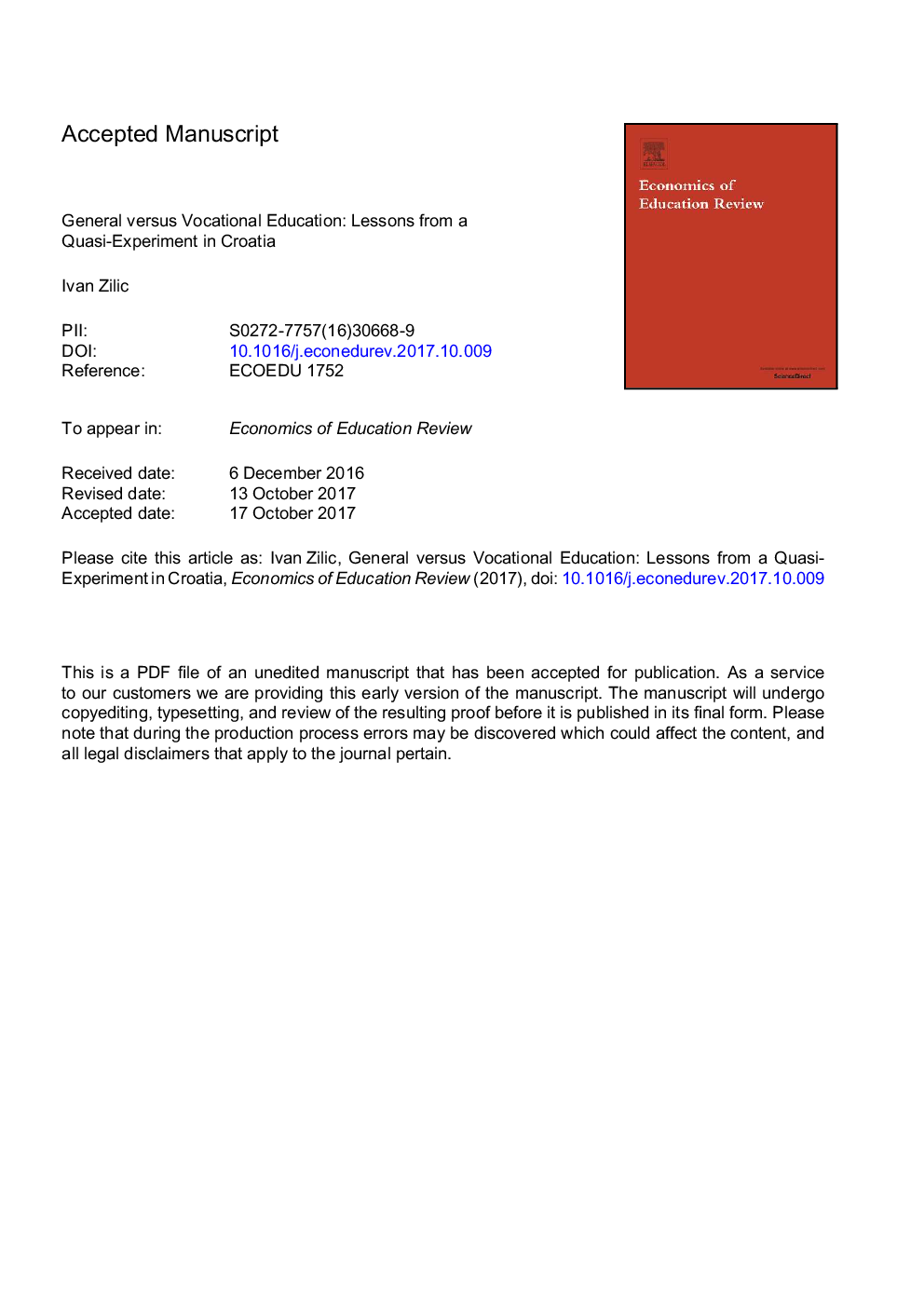| Article ID | Journal | Published Year | Pages | File Type |
|---|---|---|---|---|
| 6840803 | Economics of Education Review | 2018 | 28 Pages |
Abstract
This paper identifies the causal effect an educational reform implemented in Croatia in 1975/76 and 1977/78 had on educational and labor market outcomes. High-school education was split into two phases which resulted in reduced tracking, extended general curriculum for students attending vocational training, and an attachment of a vocational context to general high-school programs. Exploiting the rules on elementary school entry and timing of the reform, we use a regression discontinuity design and pooled Labor Force Surveys 2000-2012 to analyze the effect of the reform on educational attainment and labor market outcomes. We observe heterogeneity of the effects of the reform across gender, as for males we find that the probability of completing high school as well as the probability of completing university education decreased, while for females we do not observe any adverse effects. We explain this heterogeneity via different selection into schooling for males and females. The reform did not positively affect individuals' labor market prospects; therefore, we conclude that the observed general-vocational wage differential is mainly driven by self-selection into the type of high school.
Related Topics
Social Sciences and Humanities
Economics, Econometrics and Finance
Economics and Econometrics
Authors
Ivan Zilic,
